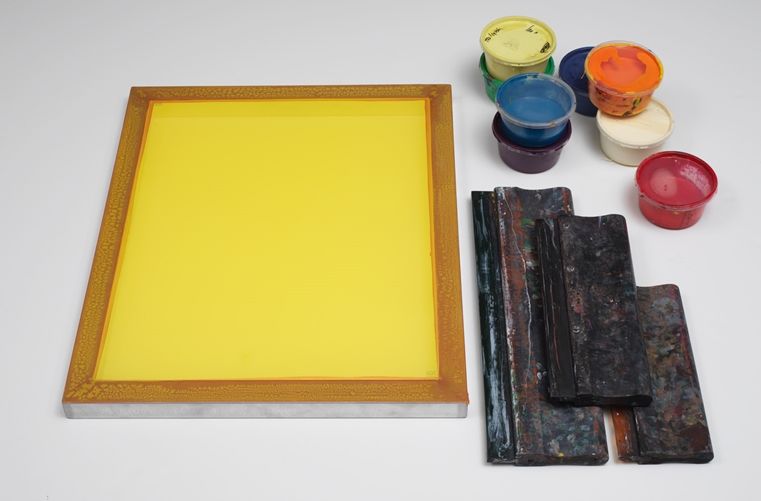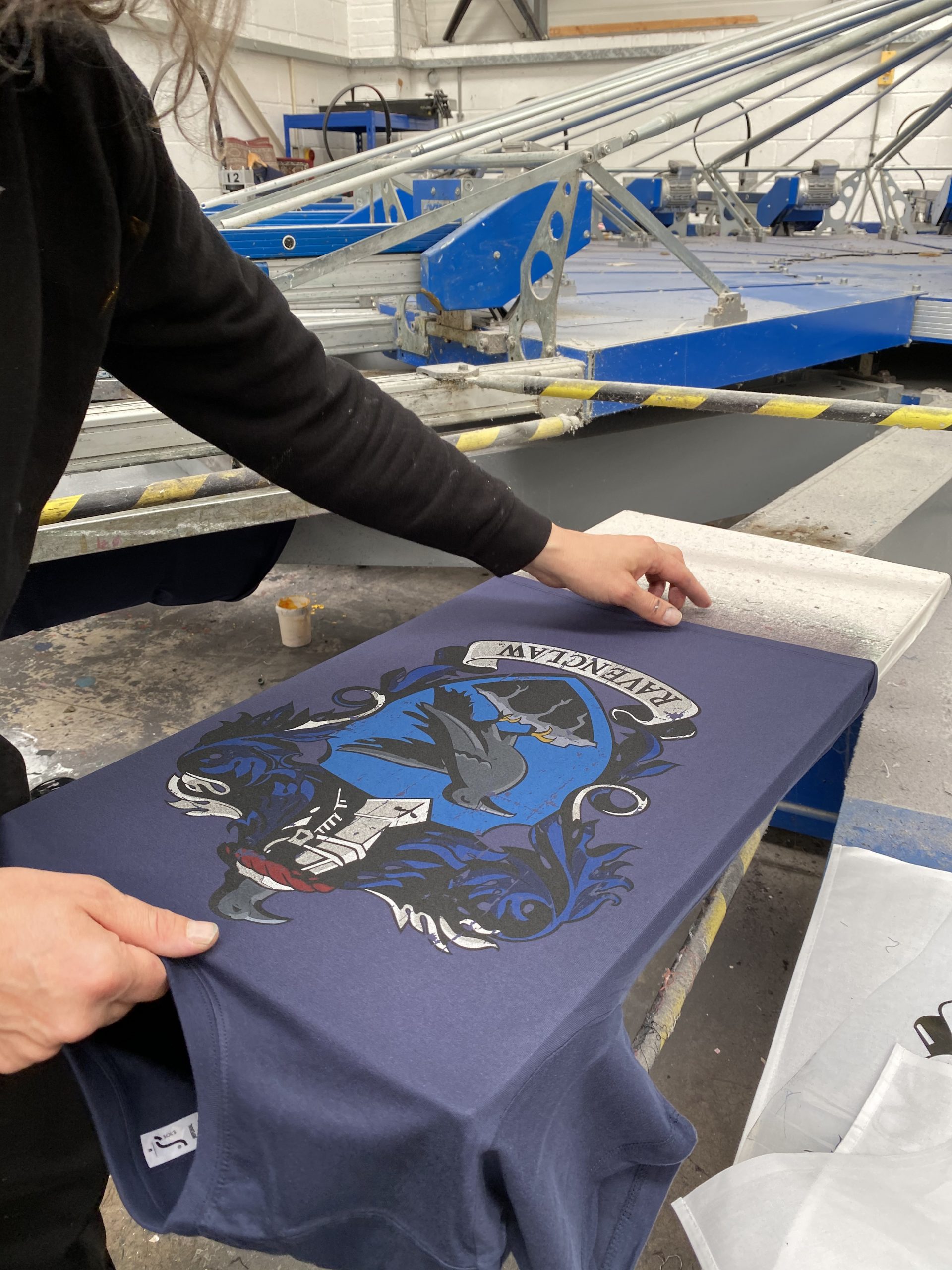The Crucial Guide to Comprehending Screen Printing and Its Versatile Makes use of
Screen printing has a rich history that dates back to ancient times, advancing into an advanced method made use of throughout various markets today. This overview checks out the details of the screen printing procedure, describing its applications in home, style, and marketing design - 10:9 Design Embroidery. Recognizing these principles can open up creative potential for both creative and industrial jobs. The complying with areas will reveal important pointers and strategies to improve one's screen printing ventures
The History of Screen Printing
Screen printing has origins that trace back centuries, its evolution mirrors the technological and imaginative improvements of various societies. Coming from ancient China, the strategy was at first made use of for decorating fabrics and later spread to Japan, where it came to be essential to Ukiyo-e woodblock printing. The method changed to Europe in the 18th century, where it acquired appeal among craftsmens and business printers. The development of picture solution in the 20th century revolutionized screen printing, enabling more intricate styles and greater effectiveness. Musicians like Andy Warhol better drove its popularity, utilizing the medium to produce iconic jobs that blended commercialism and art. By the late 20th century, screen printing had actually established itself as a versatile strategy, utilized in vogue, advertising, and art. Today, it remains to evolve, integrating electronic innovation and broadening its applications throughout numerous industries.
The Screen Printing Process Explained
Screen printing changes artistic visions into substantial styles via a series of specific steps. A photo is developed and then moved onto a screen, typically made of fine mesh fabric stretched over a framework. A light-sensitive solution is used to the screen, which is revealed to light, solidifying in locations not covered by the picture. After cleaning out the unhardened solution, a pattern is developed.
Next, the screen is placed over the substratum, whether it be textile, paper, or another material. Ink is then pushed with the open areas of the pattern using a squeegee, transferring the design onto the substrate below. This process can be repeated for multiple colors, requiring separate displays for each and every tone. The printed product is treated utilizing warmth to guarantee the ink adheres properly, resulting in a durable, vivid style prepared for usage.
Kinds of Screen Printing Techniques

Furthermore, specialized techniques, such as discharge screen printing, remove dye from the fabric to create softer prints, while aluminum foil screen printing uses metal foil to attain a shiny coating (10:9 Design reviews). Each strategy uses unique qualities, providing to different innovative needs and manufacturing ranges, eventually expanding the opportunities within the screen printing domain name
Applications of Screen Printing in Numerous Industries

Furthermore, the signage and marketing industries utilize screen printing for creating distinctive display screens and banners. This technique permits strong shades and detailed styles that capture focus. In electronic devices, screen printing is employed for applying conductive inks to circuit card, crucial for element links. In addition, the home design sector accepts screen printing to produce unique layouts on fabrics and wall art. Generally, screen printing functions as a crucial device throughout diverse fields, enhancing products with personalized and aesthetically enticing graphics.
Tips for Successful Screen Printing Projects
While carrying out a screen printing task, careful focus to detail can substantially enhance the final end result. Picking top quality products is crucial; this includes the screen, inks, and substratums. Making use of suitable mesh matters can affect ink deposition and detail resolution. Prep work is equally important; thorough cleaning of displays and correct exposure times ensure crisp prints.
Next off, exact registration is crucial for multi-color prints. Making use of alignment tools can help accomplish specific layering. Additionally, testing prints on scrap products before manufacturing helps determine potential issues without losing sources.

Often Asked Concerns
What Materials Are Ideal for Screen Printing on Fabric?
Cotton and polyester blends are excellent for screen printing on material as a result of their sturdiness and ink absorption. In addition, specialty textiles like silk or canvas can produce unique structures and finishes, boosting the overall design quality.
Exactly how Do I Tidy and Maintain Screen Printing Equipment?
To cleanse and maintain screen printing devices, one must consistently wash displays with proper solvents, inspect squeegees for wear, lube relocating parts, and store all products in a completely dry, dust-free setting to prolong their life-span.
What Are the Ecological Impacts of Screen Printing?
Screen printing can have significant ecological influences, consisting of chemical waste from inks and solvents, water usage during cleansing procedures, and power intake. Sustainable practices and green products are crucial for lessening these negative effects.
Can Screen Printing Be Done at Home Efficiently?
Screen printing can be successfully done at home with the ideal products and methods. Enthusiasts can develop top quality prints, though success relies on their ability degree, devices, and understanding of the process involved.
What Are the Costs Connected With Starting a Screen Printing Company?

Beginning a screen printing company involves prices for devices, materials, and work space. Preliminary expenditures commonly vary from a few hundred to a number of thousand dollars, relying on the scale, high quality of equipment, and desired production ability.
Screen printing has a rich background that dates back to ancient times, advancing into an innovative strategy used throughout various sectors today. An additional strategy, rotating screen printing, utilizes round screens, helping with continuous printing on fabric rolls, consequently enhancing performance for large-scale manufacturings. Additionally, specialized strategies, such as discharge screen printing, get rid of dye from the textile to produce softer prints, while aluminum foil screen printing applies metallic aluminum foil to achieve a glossy coating. In the fashion market, screen printing is widely made use of to create vibrant styles on garments, allowing brand names to display their distinct designs. Cotton and polyester blends are perfect for screen printing on fabric due to their durability and ink website absorption.